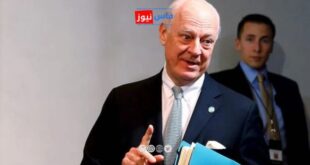Bank Al-Maghrib’s (BAM) weekly indicators provide crucial information on the economic health of Morocco. For the week of March 27 to April 2, 2025, several key points emerge, revealing the dynamics of the foreign exchange market, official reserves, and interest rate trends. Here’s a detailed overview of these indicators:
The Moroccan dirham experienced a notable depreciation of 0.2% against the US dollar and 0.4% against the euro. This trend could be interpreted as a sign of the dirham’s vulnerability in an uncertain global economic context. Currency fluctuations can impact the cost of imports and exports, affecting the country’s inflation and trade balance. Analysts suggest this depreciation may also result from evolving monetary policies globally and geopolitical tensions.
During this period, no auction operations were conducted in the foreign exchange market. This may indicate a wait-and-see approach by BAM in an uncertain economic environment. Such an absence could also signal a desire to maintain the dirham’s stability without resorting to direct interventions, reflecting a cautious strategy in the face of market fluctuations.
Official reserve assets stood at 371 billion dirhams (MMDH) as of March 28, 2025, showing near-stability compared to the previous week, with a 1.9% year-on-year increase. This stability is a good indicator of the country’s solid economic foundations, allowing BAM to effectively manage external challenges. Foreign exchange reserves play a crucial role in protecting the national economy from external shocks and ensuring investor confidence.
BAM’s intervention volume averaged 148.2 MMDH daily. This figure testifies to the central bank’s commitment to regulating the money market and ensuring the necessary liquidity to support economic activities. Interventions can also be seen as a means to stabilize the dirham and control inflation by adjusting the liquidity supply in the market.
In the interbank market, the average daily trading volume was 7.3 MMDH, while the average interbank rate was 2.26%. These figures suggest a certain liquidity in the interbank lending market, which is essential for the proper functioning of the financial system. A relatively low interbank rate may also indicate increased confidence among financial institutions, promoting access to credit for businesses and consumers.
BAM’s weekly indicators for the week of March 27 to April 2, 2025, reveal several important trends that deserve monitoring. The dirham’s depreciation, reserve stability, absence of auctions, and BAM’s intervention volumes are all signals that can influence the perception of Morocco’s economic health. As the global economy continues to evolve, it will be essential for BAM and Moroccan policymakers to remain vigilant and responsive to currency fluctuations and future economic challenges.
 فاس نيوز ميديا جريدة الكترونية جهوية تعنى بشؤون و أخبار جهة فاس مكناس – متجددة على مدار الساعة
فاس نيوز ميديا جريدة الكترونية جهوية تعنى بشؤون و أخبار جهة فاس مكناس – متجددة على مدار الساعة













